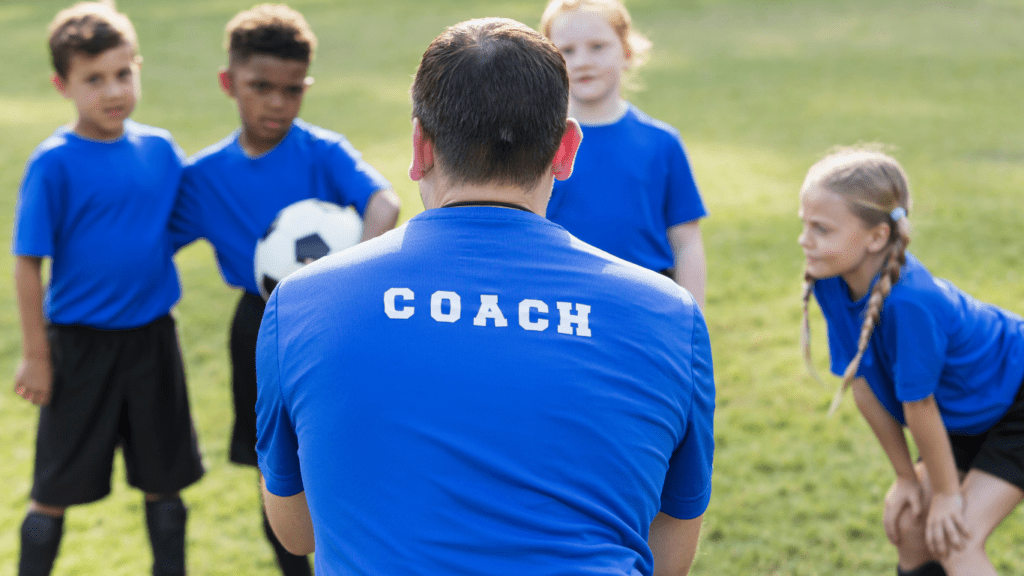As a coach, I know how crucial it is to keep athletes safe while helping them reach their full potential. Balancing intense training with injury prevention isn’t always easy, but it’s essential for long-term success. A well-designed practice session can make all the difference in keeping players healthy and performing at their best.
Injuries don’t just sideline athletes—they disrupt team dynamics and progress. That’s why I believe every practice should include strategies to minimize risks without compromising performance. By focusing on proper preparation, smart training techniques, and recovery, we can create an environment where athletes thrive safely.
Importance Of Injury Prevention In Sports
- Minimizing sports injuries protects athletes’ health and preserves team dynamics. Injuries disrupt training schedules, hinder performance, and may lead to long-term physical and mental challenges. Prevention helps ensure uninterrupted participation and optimal athletic development.
- Reducing injury risks also enhances athletes’ confidence in training. When athletes feel safe, they’re more likely to engage fully and strive for peak performance. Coaches who prioritize safety foster trust and build stronger team cohesion.
- Injury prevention lowers medical costs and recovery time. Treatment and rehabilitation require significant investments of time and resources. By focusing on prevention, coaches can allocate energy to skill development rather than addressing avoidable setbacks.
- Creating structured, science-based practice routines reduces overuse and acute injuries. Methods like warm-ups, dynamic stretches, and progressive workload adjustments prepare athletes’ bodies for physical demands. These approaches improve resilience and decrease the likelihood of harm.
- Incorporating injury prevention in sports strengthens athletes’ longevity, supports team goals, and contributes to overall success. By addressing risks proactively, I help athletes reach their full potential while maintaining their well-being.
Key Principles Of Designing Injury-Preventive Practice Sessions
Effective injury prevention requires integrating science-based methods into practice planning. I prioritize strategies that address common injury causes, optimize training intensity, and enhance preparation and recovery.
Understanding Common Sports Injuries
Identifying injury trends in your sport allows for targeted prevention strategies. Overuse injuries like tendinitis and stress fractures often result from repetitive motion without adequate recovery. Acute injuries, including sprains and dislocations, occur due to high-impact movements or poor technique. When I recognize these risks, I adjust sessions to reduce high-strain activities and introduce protective techniques.
Balancing Training Intensity And Recovery
I structure training to maintain performance while reducing fatigue-related injury risks. Progressive workload increases, limited to 10% weekly increments, help avoid overtraining. Recovery periods, including active rest or light mobility exercises, aid muscle repair and replenish energy levels. By prioritizing load management, athletes sustain performance and minimize injury risks.
Emphasizing Proper Warm-Ups And Cool-Downs
Dynamic warm-ups improve flexibility, coordination, and circulation, reducing muscle stiffness before activity. I include mobility drills and sport-specific movements to prepare athletes for session demands. Cool-down routines with stretching and low-intensity activities help prevent lactic acid buildup and promote recovery. Consistently applying these routines enhances long-term resilience against injuries.
Integrating Injury Prevention Into Coaching Strategies
Integrating injury prevention into coaching improves athlete safety and performance. I prioritize adjustments for diverse age groups, ensure sport-specific drills are conducted safely, and foster open communication for better athlete awareness.
Adapting Training Programs for Different Age Groups
Athlete age directly impacts physical capacity and injury risk. I tailor training intensity, volume, and recovery periods to suit developmental stages. For younger athletes, I focus on fundamental movement skills to enhance coordination and reduce overuse injury risks. In contrast, with older athletes, I gradually introduce more intensive strength and endurance exercises, ensuring proper recovery time to combat fatigue-related injuries. Monitoring maturation rates helps me adapt their workloads effectively.
Incorporating Sport-Specific Drills Safely
Sport-specific movements require precision to prevent injuries. I implement progressive skill-building before introducing complex drills to ensure athletes gain adequate strength and control. For example, in sports like soccer and basketball, I introduce agility exercises gradually and emphasize correct landing techniques to prevent knee injuries. Additionally, I evaluate the playing surface and equipment suitability to minimize external injury risks.
Promoting Communication and Athlete Awareness
Clear communication strengthens injury-prevention strategies. I encourage athletes to report discomfort or fatigue promptly, as addressing minor issues early prevents escalation. Injury education is a cornerstone of my coaching—teaching proper techniques, the importance of recovery, and recognizing injury signs helps athletes make informed decisions. Regular feedback sessions enable me to assess well-being and adjust training plans, building a collaborative and safe environment.
Utilizing Evidence-Based Techniques In Practice Design

Integrating evidence-based techniques into practice design enhances injury prevention while fostering athlete development. I focus on proven methods to boost performance and safety simultaneously.
Role Of Strength And Conditioning
Strength and conditioning improve athletes’ resilience against injuries by:
- enhancing muscle strength
- joint stability
- overall endurance
I implement programs that prioritize functional strength tailored to the sport’s demands. For example, lower-body strength exercises like squats for soccer players enhance agility and reduce risks of knee injuries. Incorporating plyometric training develops power while teaching landing mechanics, lowering the likelihood of overuse or acute injuries. Regular assessments ensure that athletes progress safely without compensation patterns that could pose risks.
Benefits Of Flexibility And Mobility Training
Flexibility and mobility training prepare the body for dynamic movements, reducing the risk of strains and sprains. I integrate dynamic stretches, such as leg swings and arm circles, into warm-up routines to increase range of motion without compromising strength. Mobility drills, like hip openers and thoracic spine rotations, target commonly tight areas, preventing mobility restrictions that lead to overcompensation. Addressing individual flexibility needs, for instance, improving hamstring flexibility in runners, further minimizes sport-specific injury risks.
Monitoring Player Workload
Monitoring workload helps prevent overtraining and associated injuries. I track workload using objective metrics like session durations, intensity levels, and GPS data for movement analysis. Sudden spikes in training intensity increase injury risks, so I ensure gradual workload progression. For instance, I adjust sprints or high-intensity drills on consecutive days to allow recovery. Athlete feedback, combined with tools like Rate of Perceived Exertion (RPE) scales, identifies fatigue signs early, facilitating immediate workload adjustments.
Tools And Resources For Coaches
Equipping coaches with the right tools and resources enhances their ability to design injury-preventive practice sessions. Leveraging technology and educational opportunities helps coaches make informed decisions to safeguard athletes’ health and performance.
Technology For Injury Tracking
Using technology simplifies the monitoring of athletes’ physical health and workload. Wearable devices, such as heart rate monitors and GPS trackers, provide real-time data on metrics like exertion levels, distance covered, and recovery times. Movement analysis tools identify imbalances or improper mechanics that could lead to injuries. Platforms like CoachMePlus and AthleteMonitoring centralize injury reports, workload trends, and performance data, giving me a comprehensive picture of my team.
I also use apps to track recovery-related metrics, including sleep patterns and muscle soreness, ensuring training schedules align with athletes’ recovery needs. Integrating these tools into practice sessions minimizes the risk of overtraining and ensures athletes remain in peak condition.
Educational Programs And Workshops
Staying updated through workshops and certification programs keeps coaching methods aligned with the latest injury prevention strategies. Organizations like the National Strength and Conditioning Association (NSCA) and the American Council on Exercise (ACE) offer courses focused on biomechanics, workload management, and age-specific training.
Webinars conducted by sports medicine professionals help me understand advanced topics, from recognizing early signs of overuse injuries to implementing progressive overload safely. Attending local workshops adds a collaborative component, allowing me to share insights with peers while refining my approach to injury-preventive practice design.
Conclusion
Designing injury-preventive practice sessions is more than just a responsibility—it’s an opportunity to create a safer, more effective training environment for athletes. By integrating evidence-based strategies, leveraging modern tools, and fostering open communication, coaches can significantly reduce injury risks while enhancing performance.
Prioritizing athlete safety not only protects their physical and mental well-being but also strengthens team cohesion and long-term success. With the right approach, we can help athletes reach their full potential while ensuring their health and longevity remain at the forefront of every practice.



 Lead Training Analyst
Lead Training Analyst
